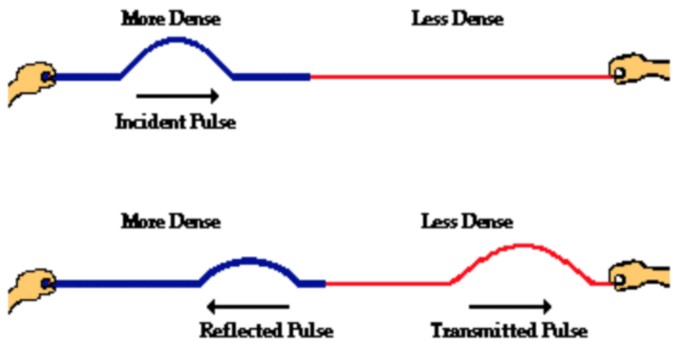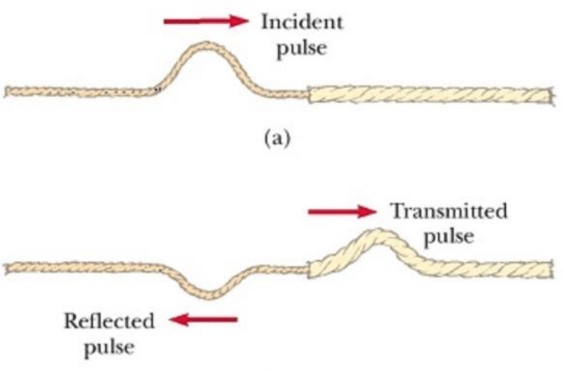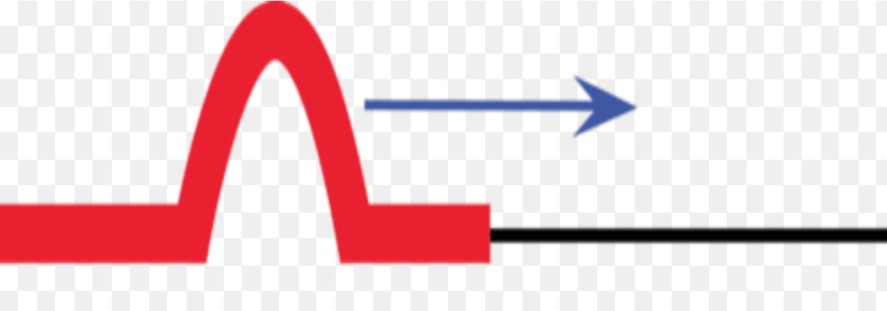In this lesson, we will learn:
- Reflection at boundaries
- Properties of the reflected waves
Notes:
As waves move from one medium to another partially reflected and partially refracted (transmitted).
- Reflection; The process of bouncing off the boundary between two media.
- The wave striking the boundary is called the incident wave
- The wave bouncing off the boundary is called the reflected wave.
- Refraction; Transmission of the energy from one medium to another. Sound waves change speed due to the temperature.
- Water waves speed changes according to the depth.
- Spring thickness changes the speed of the waves.
- Wave reflecting from less dense medium is ERECT.
Example; reflection from thinner rope into thicker rope

- Wave reflecting from denser medium is INVERTED.
Example; reflection from WALL or from a THICK rope










